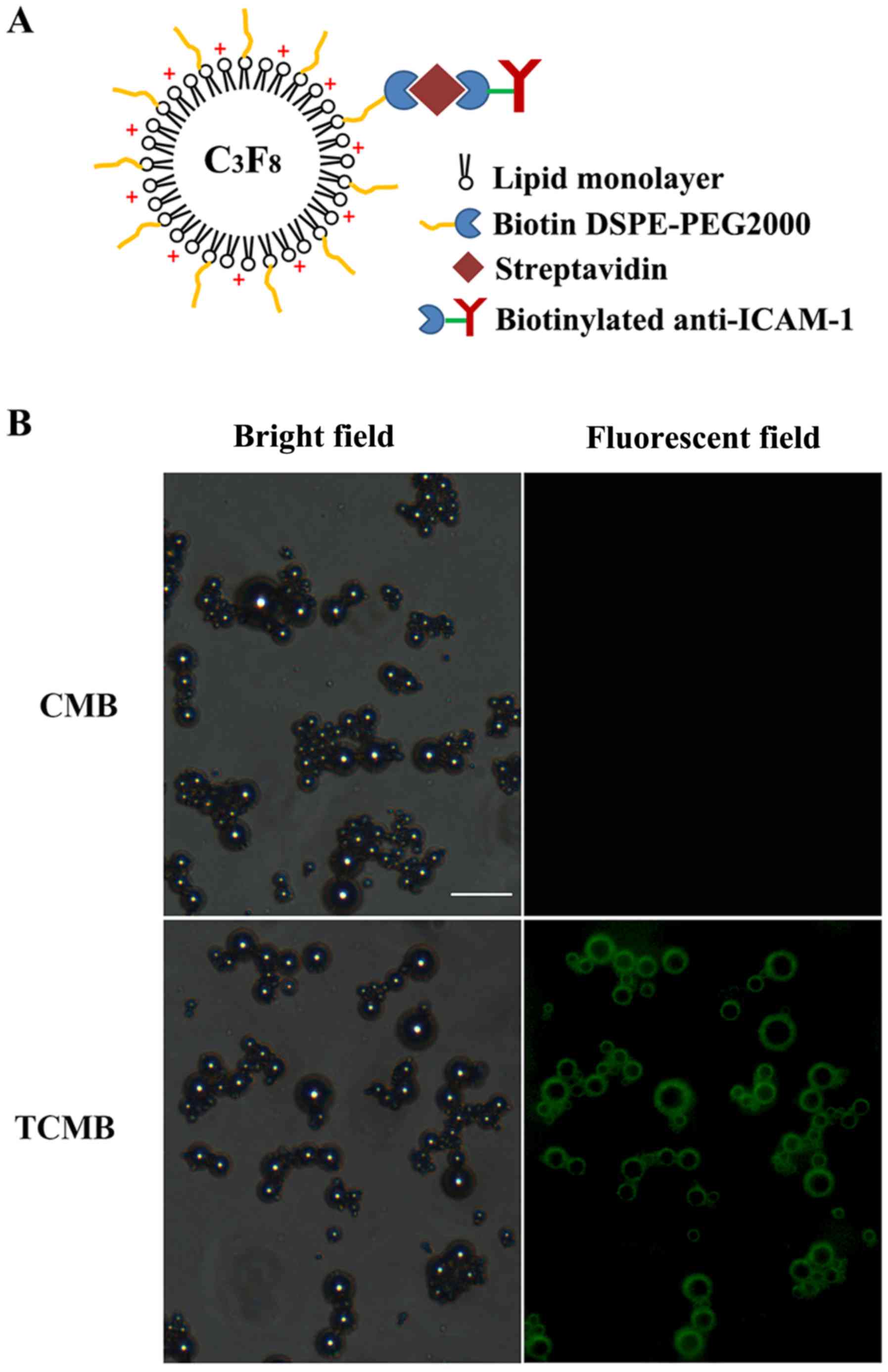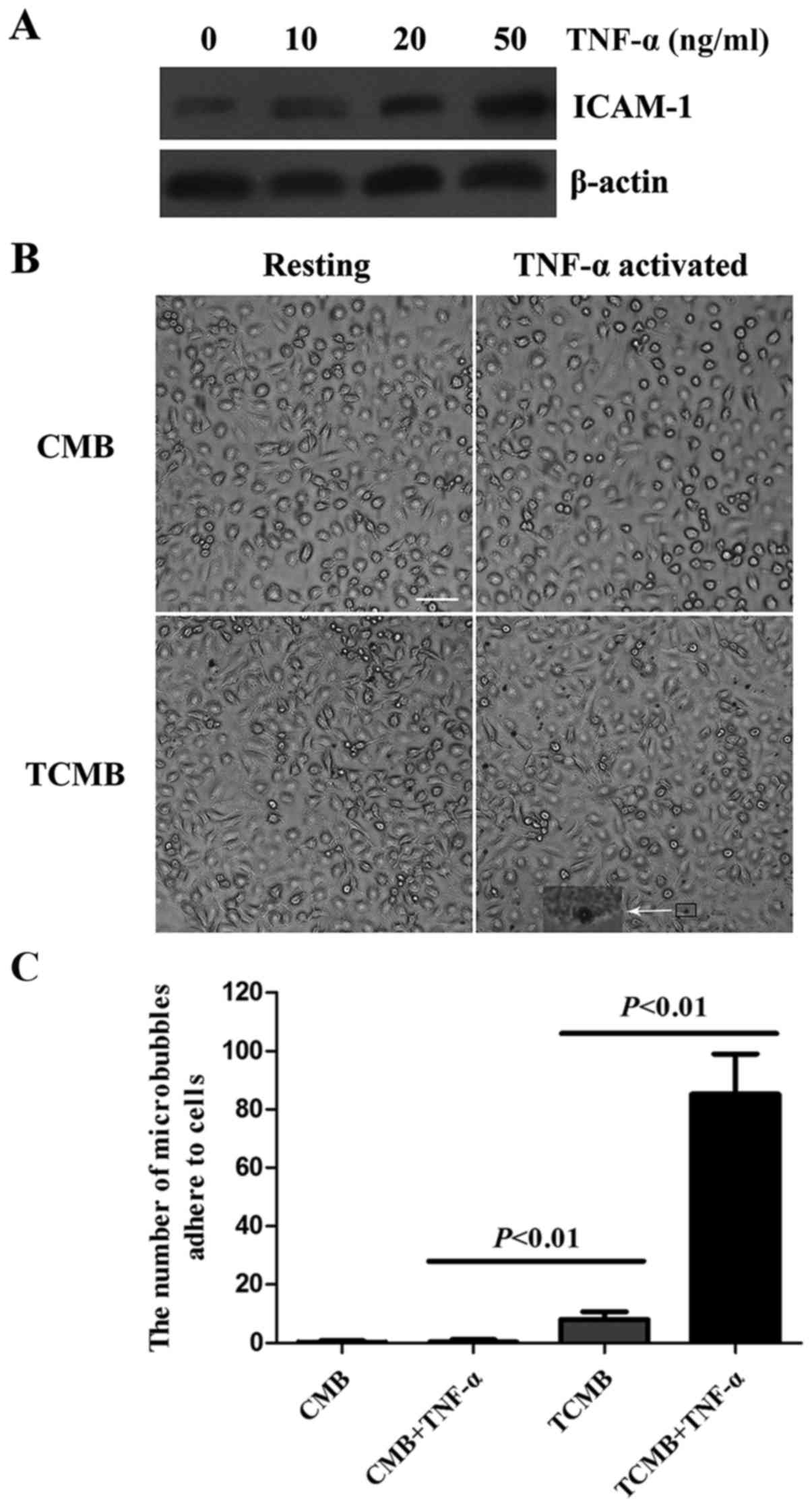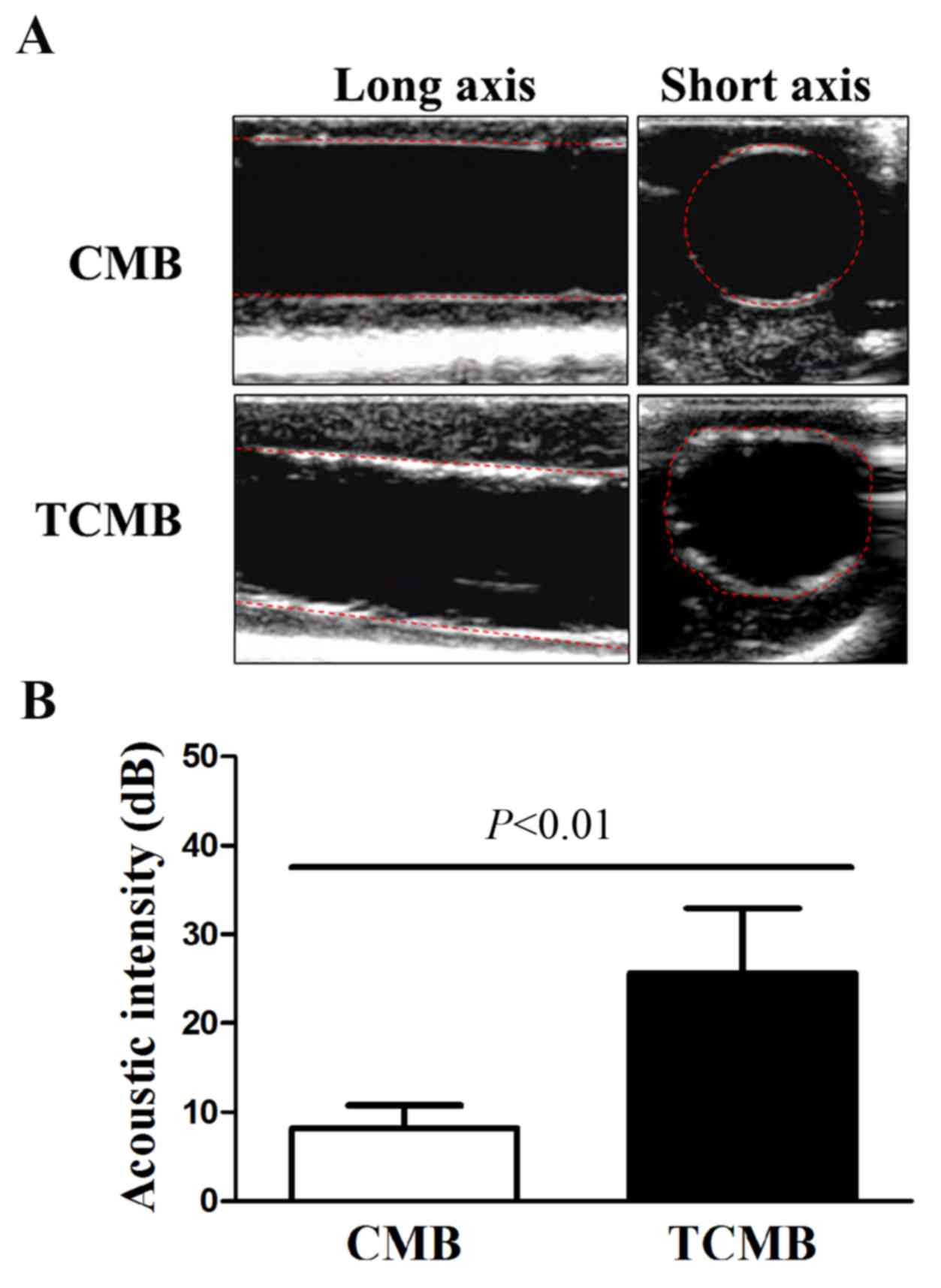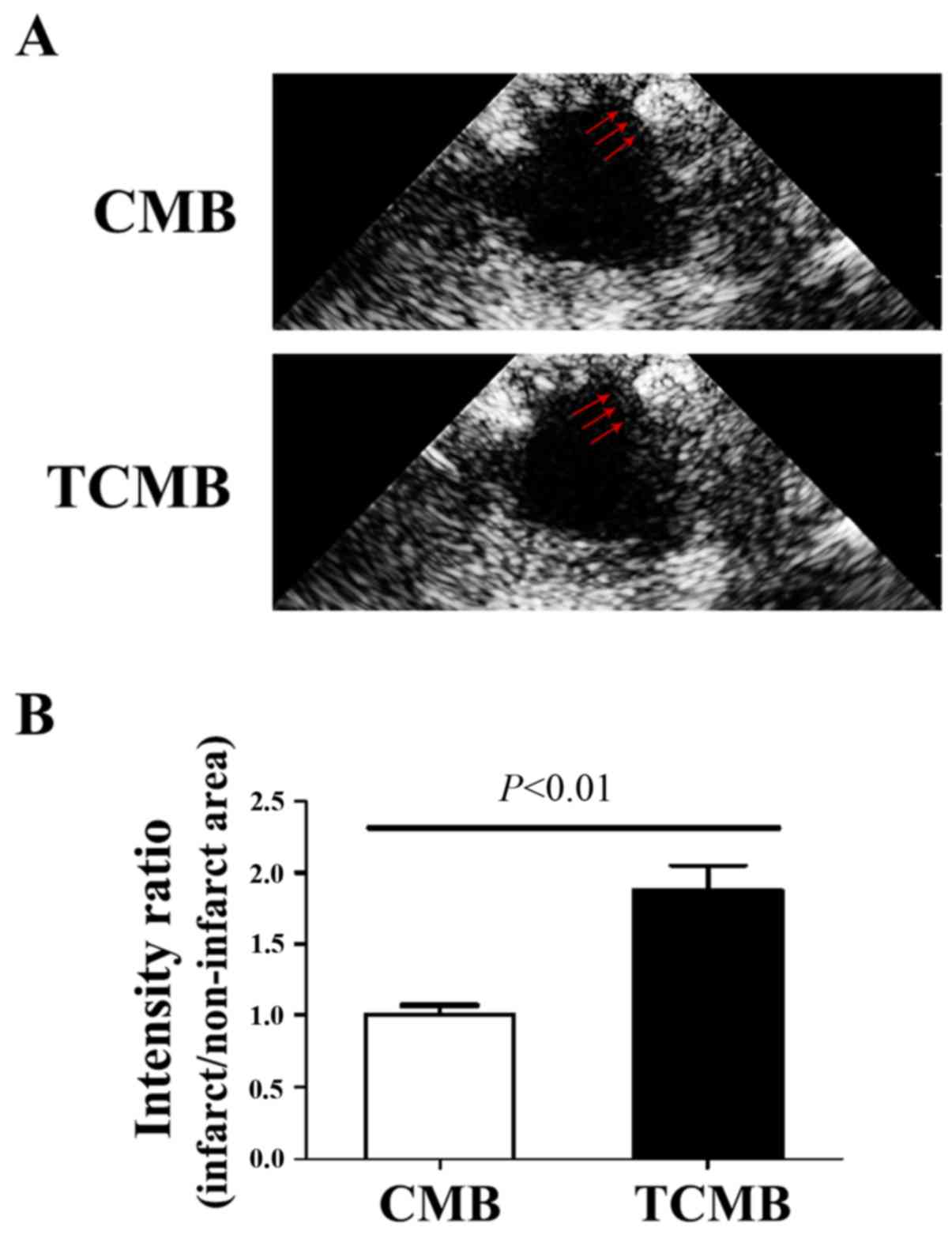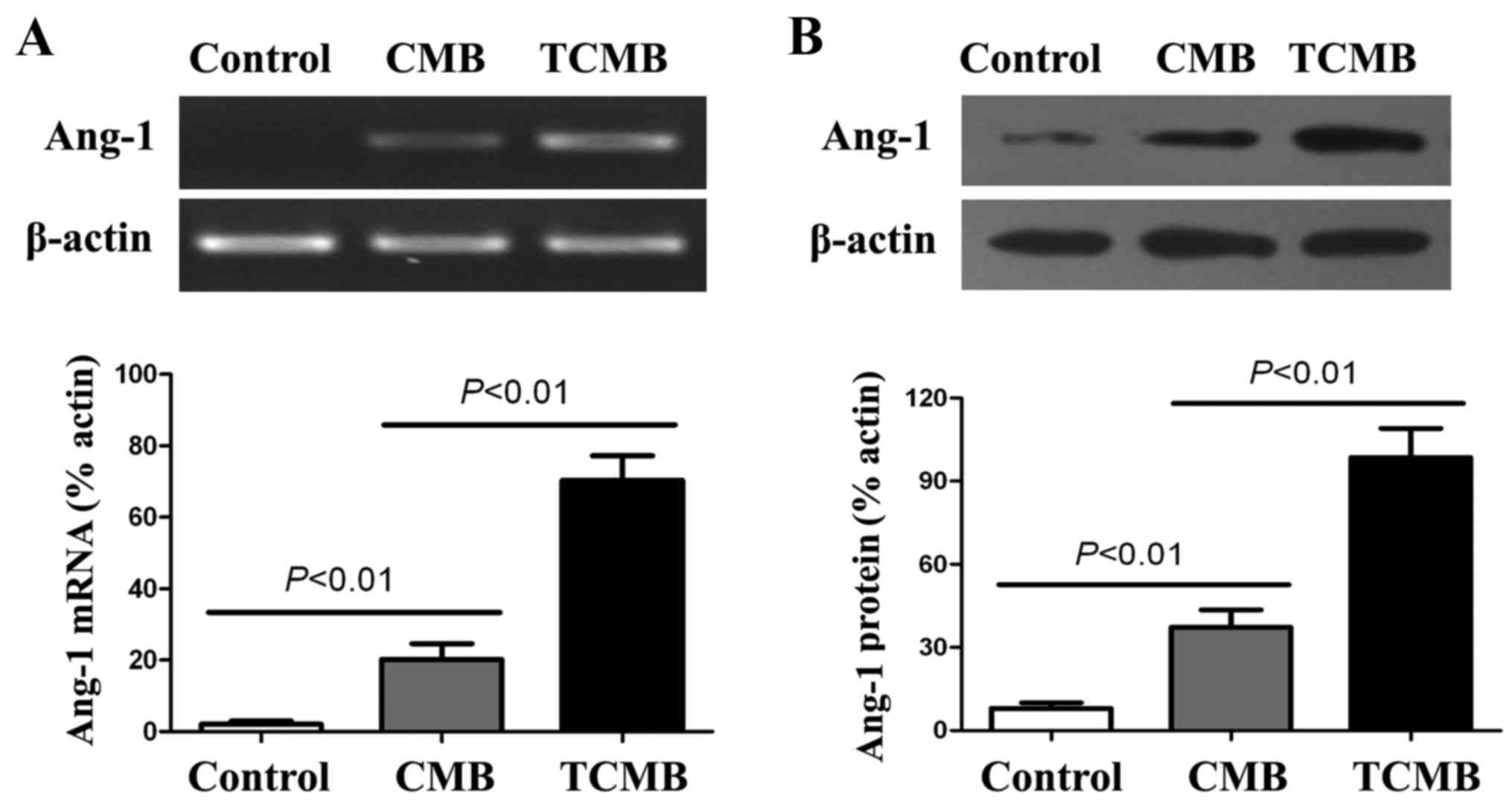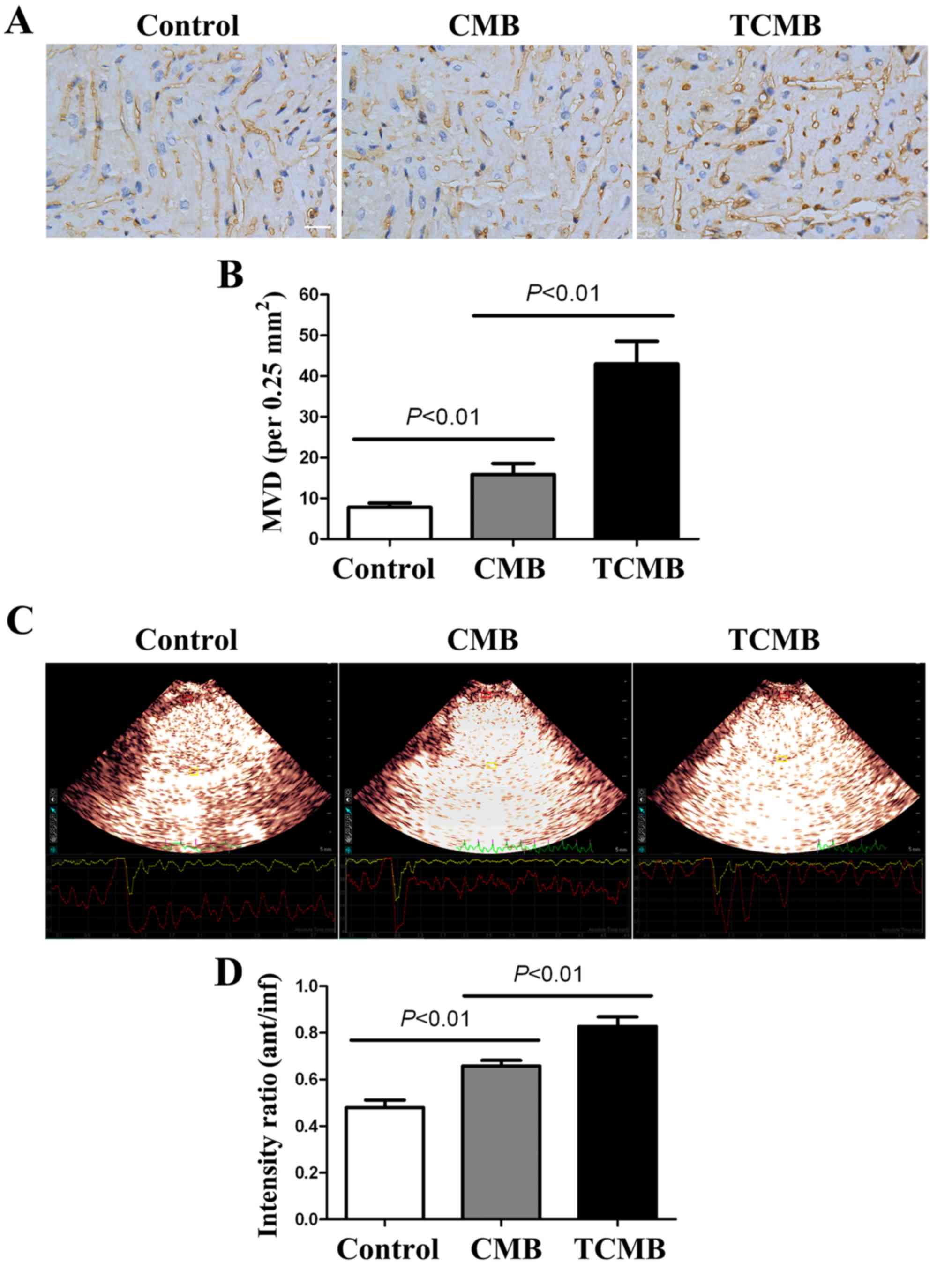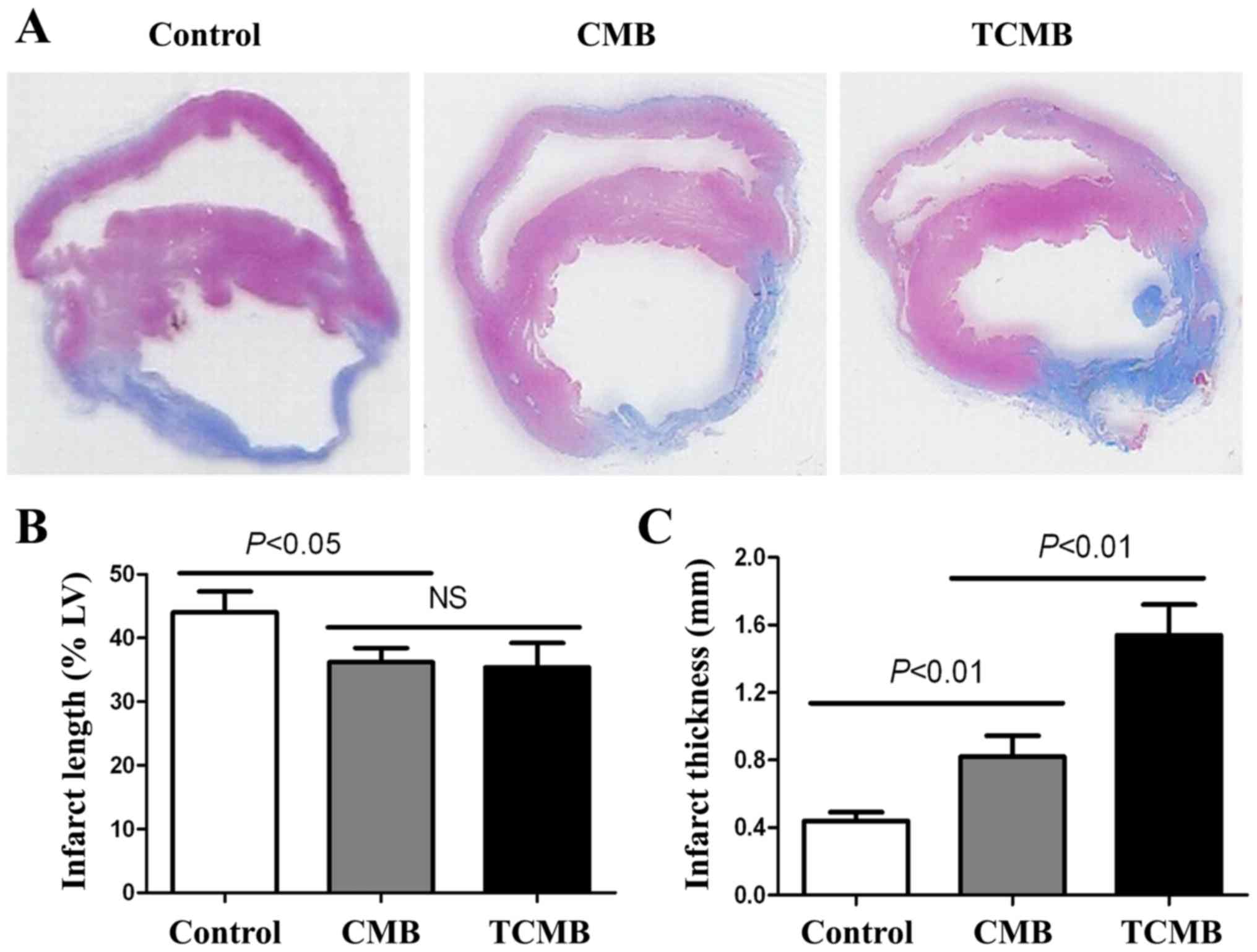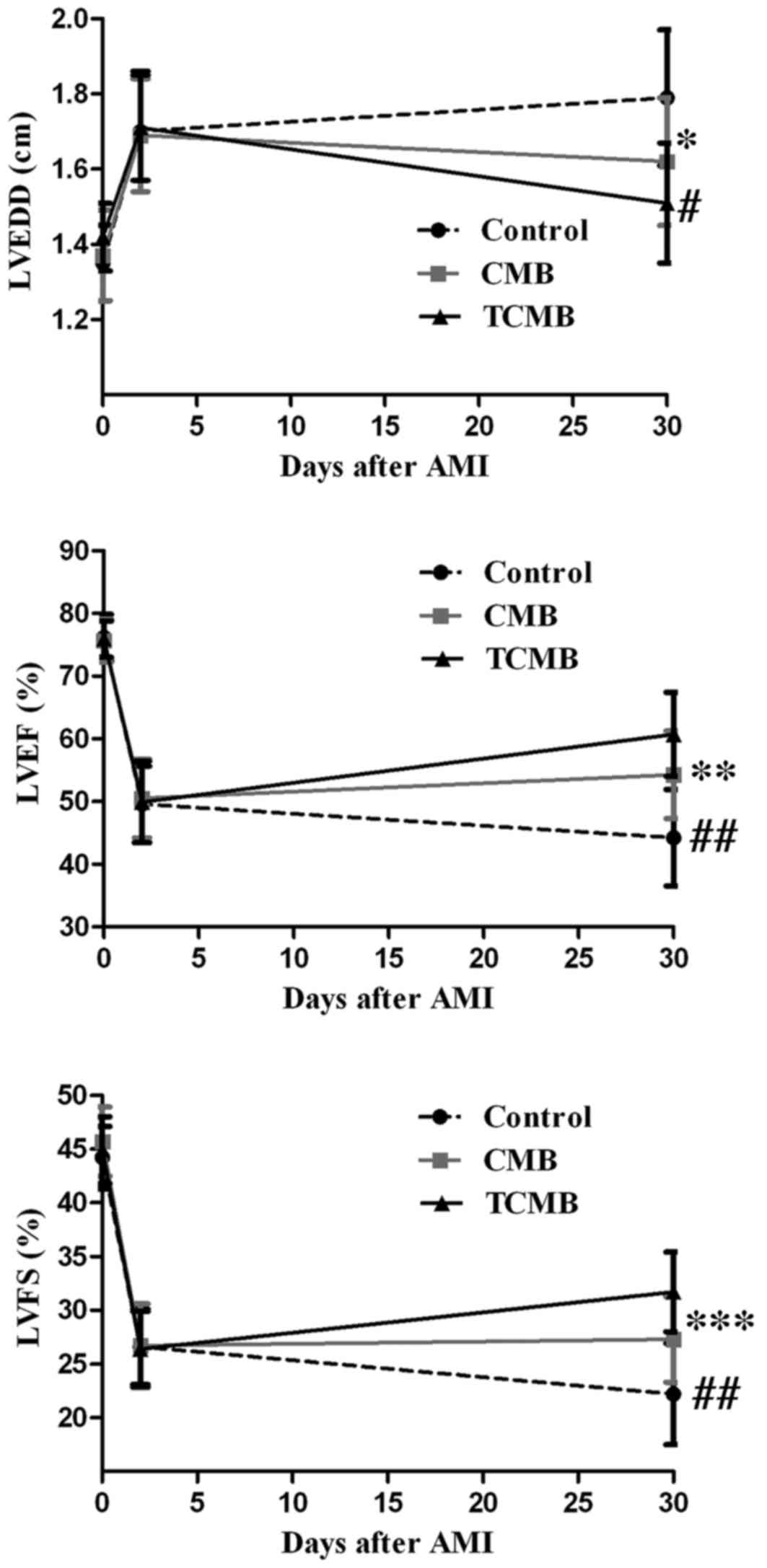|
1
|
Henry TD, Satran D, Hodges JS, Johnson RK,
Poulose AK, Campbell AR, Garberich RF, Bart BA, Olson RE, Boisjolie
CR, et al: Long-term survival in patients with refractory angina.
Eur Heart J. 34:2683–2688. 2013. View Article : Google Scholar : PubMed/NCBI
|
|
2
|
Lassaletta AD, Chu LM and Sel FW:
Therapeutic neovascularization for coronary disease: Current state
and future prospects. Basic Res Cardiol. 106:897–909. 2011.
View Article : Google Scholar : PubMed/NCBI
|
|
3
|
Cochain C, Channon KM and Silvestre JS:
Angiogenesis in the infarcted myocardium. Antioxid Redox Signal.
18:1100–1113. 2013. View Article : Google Scholar : PubMed/NCBI
|
|
4
|
Katz MG, Fargnoli AS, Williams RD and
Bridges CR: The road ahead: Working towards effective clinical
translation of myocardial gene therapies. Ther Deliv. 5:39–51.
2014. View Article : Google Scholar : PubMed/NCBI
|
|
5
|
Katz MG, Fargnoli AS, Pritchette LA and
Bridges CR: Gene delivery technologies for cardiac applications.
Gene Ther. 19:659–669. 2012. View Article : Google Scholar : PubMed/NCBI
|
|
6
|
Cool SK, Geers B, Lentacker I, De Smedt SC
and Sanders NN: Enhancing nucleic acid delivery with ultrasound and
microbubbles. Methods Mol Biol. 948:195–204. 2013. View Article : Google Scholar : PubMed/NCBI
|
|
7
|
Geis NA, Katus HA and Bekeredjian R:
Microbubbles as a vehicle for gene and drug delivery: Current
clinical implications and future perspectives. Curr Pharm Des.
18:2166–2183. 2012. View Article : Google Scholar : PubMed/NCBI
|
|
8
|
Ma J, DU LF, Chen M, Wang HH, Xing LX,
Jing LF and Li YH: Drug-loaded nano-microcapsules delivery system
mediated by ultrasound-targeted microbubble destruction: A
promising therapy method. Biomed Rep. 1:506–510. 2013.PubMed/NCBI
|
|
9
|
Smith AH, Fujii H, Kuliszewski MA and
Leong-Poi H: Contrast ultrasound and targeted microbubbles:
Diagnostic and therapeutic applications for angiogenesis. J
Cardiovasc Transl Res. 4:404–415. 2011. View Article : Google Scholar : PubMed/NCBI
|
|
10
|
Liao YY, Chen ZY, Wang YX, Lin Y, Yang F
and Zhou QL: New progress in angiogenesis therapy of cardiovascular
disease by ultrasound targeted microbubble destruction. Biomed Res
Int. 2014:8729842014. View Article : Google Scholar : PubMed/NCBI
|
|
11
|
Fujii H, Sun Z, Li SH, Wu J, Fazel S,
Weisel RD, Rakowski H, Lindner J and Li RK: Ultrasound-targeted
gene delivery induces angiogenesis after a myocardial infarction in
mice. JACC Cardiovasc Imaging. 2:869–879. 2009. View Article : Google Scholar : PubMed/NCBI
|
|
12
|
Castle J, Butts M, Healey A, Kent K,
Marino M and Feinstein SB: Ultrasound-mediated targeted drug
delivery: Recent success and remaining challenges. Am J Physiol
Heart Circ Physiol. 304:H350–H357. 2013. View Article : Google Scholar : PubMed/NCBI
|
|
13
|
Delalande A, Postema M, Mignet N, Midoux P
and Pichon C: Ultrasound and microbubble-assisted gene delivery:
Recent advances and ongoing challenges. Ther Deliv. 3:1199–1215.
2012. View Article : Google Scholar : PubMed/NCBI
|
|
14
|
Yang H, Xiong XY, Zhang L, Wu C and Liu Y:
Adhesion of bio-functionalized ultrasound microbubbles to
endothelial cells by targeting to vascular cell adhesion molecule-1
under shear flow. Int J Nanomedicine. 6:2043–2051. 2011.PubMed/NCBI
|
|
15
|
Murciano JC, Muro S, Koniaris L,
Christofidou-Solomidou M, Harshaw DW, Albelda SM, Granger DN, Cines
DB and Muzykantov VR: ICAM-directed vascular immunotargeting of
antithrombotic agents to the endothelial luminal surface. Blood.
101:3977–3984. 2003. View Article : Google Scholar : PubMed/NCBI
|
|
16
|
Yan Y, Liao Y, Yang L, Wu J, Du J, Xuan W,
Ji L, Huang Q, Liu Y and Bin J: Late-phase detection of recent
myocardial ischaemia using ultrasound molecular imaging targeted to
intercellular adhesion molecule-1. Cardiovasc Res. 89:175–183.
2011. View Article : Google Scholar : PubMed/NCBI
|
|
17
|
Morisada T, Kubota Y, Urano T, Suda T and
Oike Y: Angiopoietins and angiopoietin-like proteins in
angiogenesis. Endothelium. 13:71–79. 2006. View Article : Google Scholar : PubMed/NCBI
|
|
18
|
Zhang H, Yuan YL, Wang Z, Jiang B, Zhang
CS, Wang Q, Xu XH, Dong HY and Zhang ZM: Sequential, timely and
controlled expression of hVEGF165 and Ang-1 effectively improves
functional angiogenesis and cardiac function in vivo. Gene Ther.
20:893–900. 2013. View Article : Google Scholar : PubMed/NCBI
|
|
19
|
Paul A, Binsalamah ZM, Khan AA, Abbasia S,
Elias CB, Shum-Tim D and Prakash S: A nanobiohybrid complex of
recombinant baculovirus and Tat/DNA nanoparticles for delivery of
Ang-1 transgene in myocardial infarction therapy. Biomaterials.
32:8304–8318. 2011. View Article : Google Scholar : PubMed/NCBI
|
|
20
|
Fagiani E and Christofori G: Angiopoietins
in angiogenesis. Cancer Lett. 328:18–26. 2013. View Article : Google Scholar : PubMed/NCBI
|
|
21
|
Xie A, Belcik T, Qi Y, Morgan TK,
Champaneri SA, Taylor S, Davidson BP, Zhao Y, Klibanov AL,
Kuliszewski MA, et al: Ultrasound-mediated vascular gene
transfection by cavitation of endothelial-targeted cationic
microbubbles. JACC Cardiovasc Imaging. 5:1253–1262. 2012.
View Article : Google Scholar : PubMed/NCBI
|
|
22
|
Yan P, Chen KJ, Wu J, Sun L, Sung HW,
Weisel RD and Li RK: The use of MMP2 antibody-conjugated cationic
microbubble to target the ischemic myocardium, enhance Timp3 gene
transfection and improve cardiac function. Biomaterials.
35:1063–873. 2014. View Article : Google Scholar : PubMed/NCBI
|
|
23
|
Weidner N: Current pathologic methods for
measuring intratumoral microvessel density within breast carcinoma
and other solid tumors. Breast Cancer Res Treat. 36:169–180. 1995.
View Article : Google Scholar : PubMed/NCBI
|
|
24
|
Delalande A, Kotopoulis S, Postema M,
Midoux P and Pichon C: Sonoporation: Mechanistic insights and
ongoing challenges for gene transfer. Gene. 525:191–199. 2013.
View Article : Google Scholar : PubMed/NCBI
|
|
25
|
Panje CM, Wang DS, Pysz MA, Paulmurugan R,
Ren Y, Tranquart F, Tian L and Willmann JK: Ultrasound-mediated
gene delivery with cationic versus neutral microbubbles: Effect of
DNA and microbubble dose on in vivo transfection efficiency.
Theranostics. 2:1078–1091. 2012. View Article : Google Scholar : PubMed/NCBI
|
|
26
|
Luo D and Saltzman WM: Enhancement of
transfection by physical concentration of DNA at the cell surface.
Nat Biotechnol. 18:893–895. 2000. View
Article : Google Scholar : PubMed/NCBI
|
|
27
|
Wang DS, Panje C, Pysz MA, Paulmurugan R,
Rosenberg J, Gambhir SS, Schneider M and Willmann JK: Cationic
versus neutral microbubbles for ultrasound-mediated gene delivery
in cancer. Radiology. 264:721–732. 2012. View Article : Google Scholar : PubMed/NCBI
|
|
28
|
Wang X, Liang HD, Dong B, Lu QL and
Blomley MJ: Gene transfer with microbubble ultrasound and plasmid
DNA into skeletal muscle of mice: Comparison between commercially
available microbubble contrast agents. Radiology. 237:224–229.
2005. View Article : Google Scholar : PubMed/NCBI
|
|
29
|
Zhou J, Wang Y, Xiong Y, Wang H, Feng Y
and Chen J: Delivery of TFPI-2 using ultrasound with a microbubble
agent (SonoVue) inhibits intimal hyperplasia after balloon injury
in a rabbit carotid artery model. Ultrasound Med Biol.
36:1876–1883. 2010. View Article : Google Scholar : PubMed/NCBI
|
|
30
|
Lentacker I, De Geest BG, Vandenbroucke
RE, Peeters L, Demeester J, De Smedt SC and Sanders NN:
Ultrasound-responsive polymer-coated microbubbles that bind and
protect DNA. Langmuir. 22:7273–7278. 2006. View Article : Google Scholar : PubMed/NCBI
|
|
31
|
Ju J, Huan ML, Wan N, Hou YL, Ma XX, Jia
YY, Li C, Zhou SY and Zhang BL: Cholesterol derived cationic lipids
as potential non-viral gene delivery vectors and their serum
compatibility. Bioorg Med Chem Lett. 26:2401–2407. 2016. View Article : Google Scholar : PubMed/NCBI
|
|
32
|
Sun L, Huang CW, Wu J, Chen KJ, Li SH,
Weisel RD, Rakowski H, Sung HW and Li RK: The use of cationic
microbubbles to improve ultrasound-targeted gene delivery to the
ischemic myocardium. Biomaterials. 34:2107–2116. 2013. View Article : Google Scholar : PubMed/NCBI
|
|
33
|
Wang X, Hagemeyer CE, Hohmann JD, Leitner
E, Armstrong PC, Jia F, Olschewski M, Needles A, Peter K and Ahrens
I: Novel single-chain antibody-targeted microbubbles for molecular
ultrasound imaging of thrombosis: Validation of a unique
noninvasive method for rapid and sensitive detection of thrombi and
monitoring of success or failure of thrombolysis in mice.
Circulation. 125:3117–3126. 2012. View Article : Google Scholar : PubMed/NCBI
|
|
34
|
Warram JM, Sorace AG, Mahoney M, Samuel S,
Harbin B, Joshi M, Martin A, Whitworth L, Hoyt K and Zinn KR:
Biodistribution of P-selectin targeted microbubbles. J Drug Target.
22:387–394. 2014. View Article : Google Scholar : PubMed/NCBI
|
|
35
|
Leong-Poi H, Christiansen J, Klibanov AL,
Kaul S and Lindner JR: Noninvasive assessment of angiogenesis by
ultrasound and microbubbles targeted to alpha (v)-integrinss.
Circulation. 107:455–460. 2003. View Article : Google Scholar : PubMed/NCBI
|
|
36
|
Dabek J, Ligus J and Szota J:
Oligonucleotide microarray and QRT-PCR study of adhesion protein
gene expression in acute coronary syndrome patients. Inflammation.
33:398–407. 2010. View Article : Google Scholar : PubMed/NCBI
|
|
37
|
Lawson C and Wolf S: ICAM-1 signaling in
endothelial cells. Pharmacol Rep. 61:22–32. 2009. View Article : Google Scholar : PubMed/NCBI
|
|
38
|
Mulvihill NT and Foley JB: Inflammation in
acute coronary syndromes. Heart. 87:201–204. 2002. View Article : Google Scholar : PubMed/NCBI
|
|
39
|
Benson V, McMahon AC and Lowe HC: ICAM-1
in acute myocardial infarction: A potential therapeutic target.
Curr Mol Med. 7:219–227. 2007. View Article : Google Scholar : PubMed/NCBI
|















